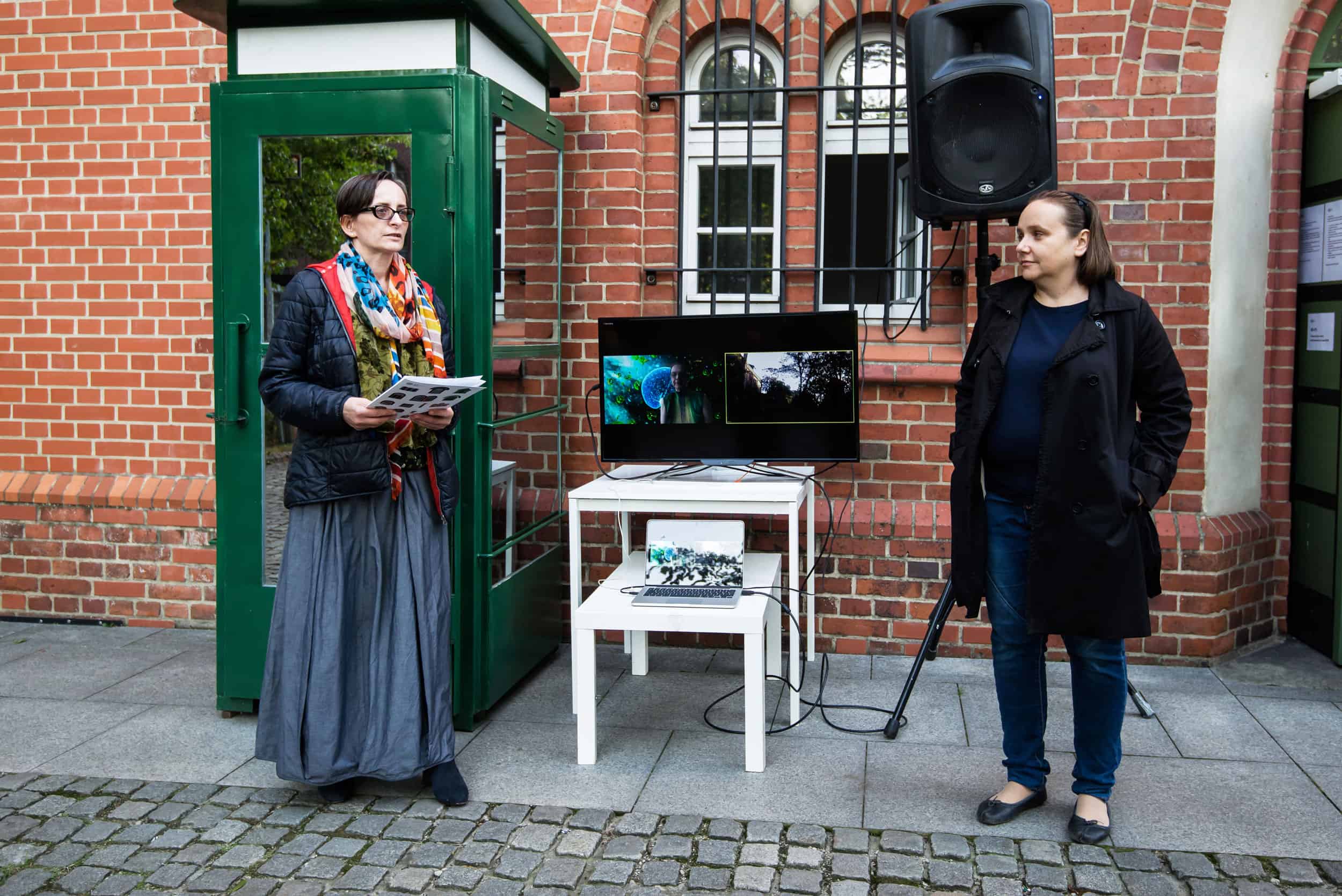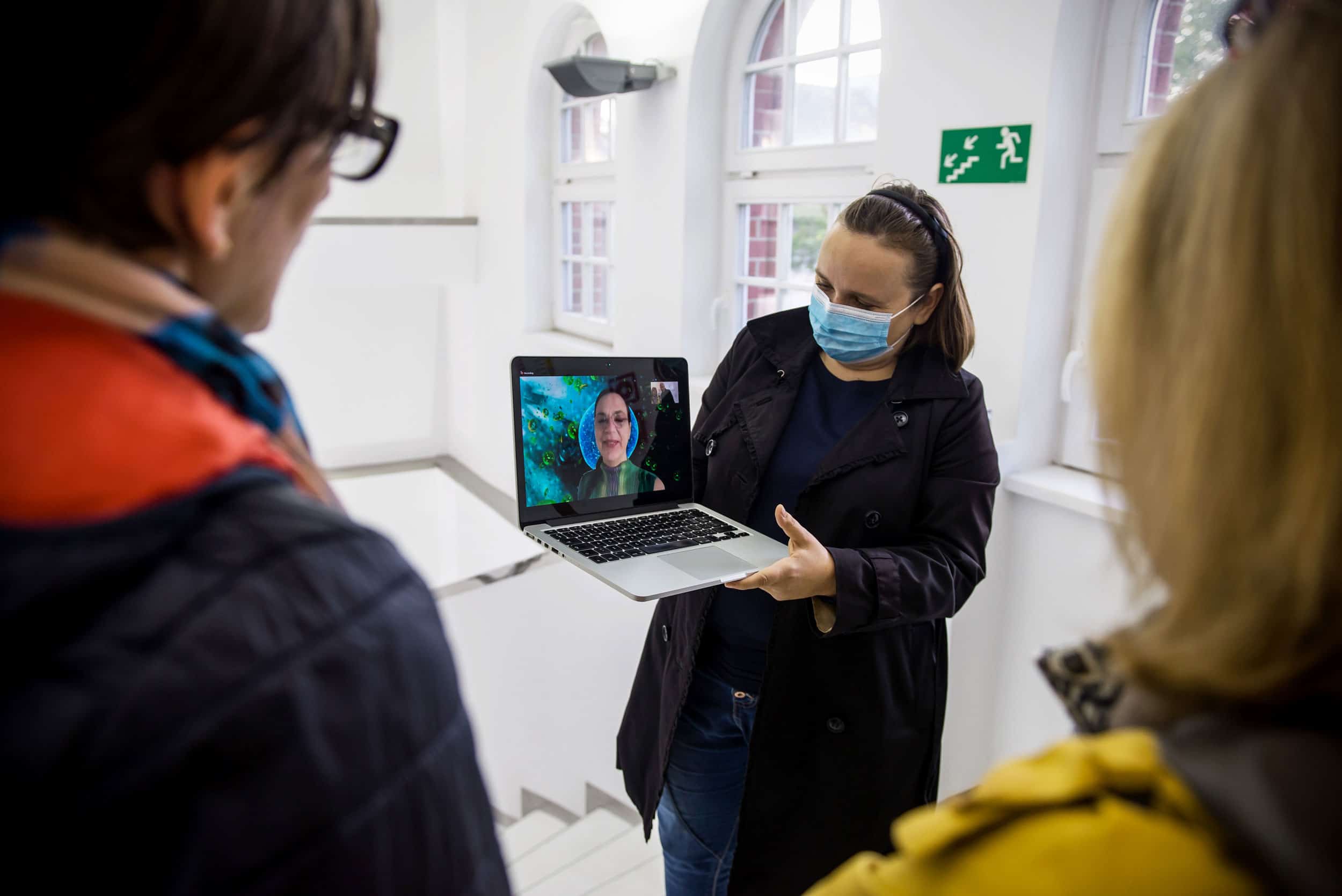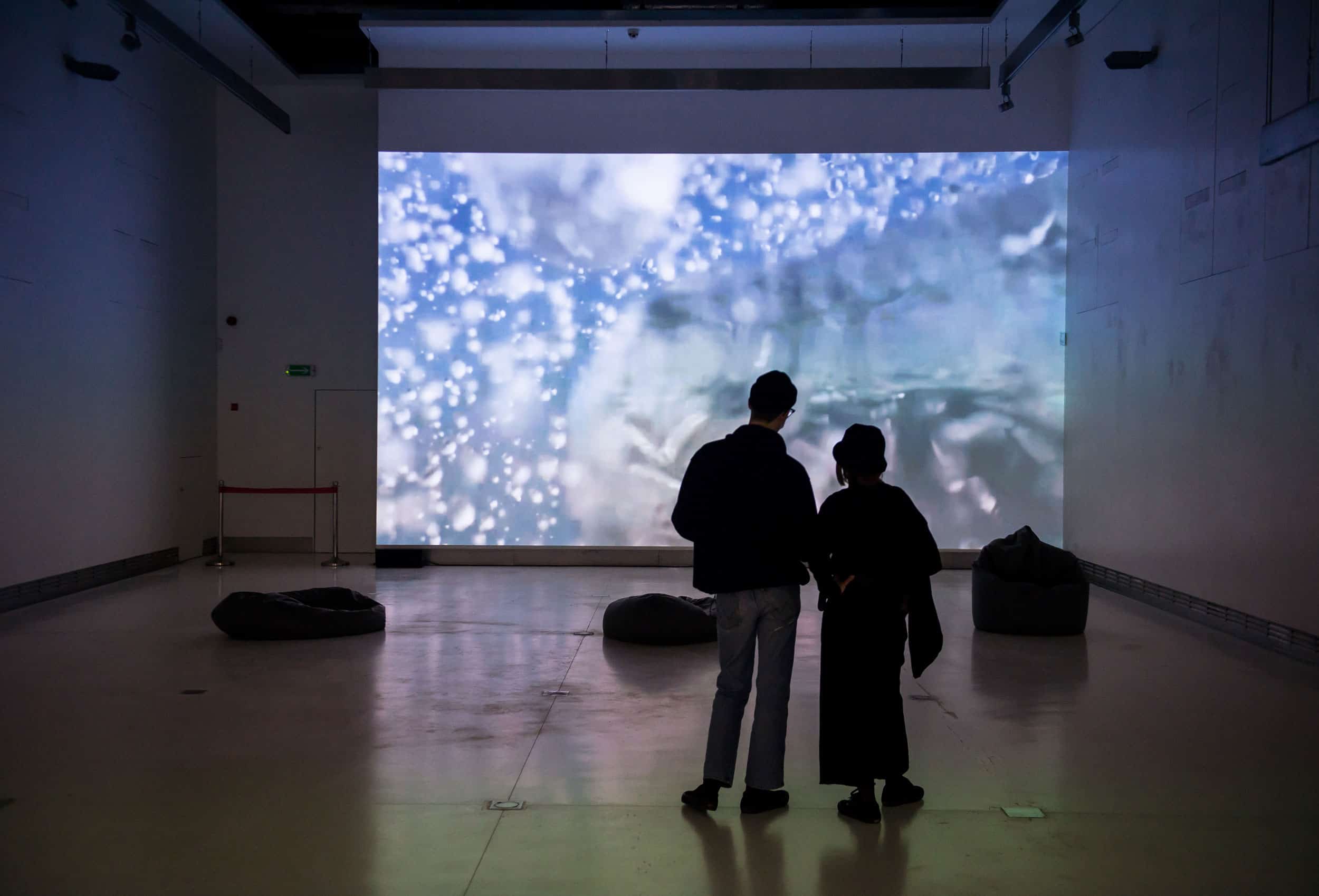RE-CONNECTING ART AND SCIENCE.
IN CONVERSATION WITH VICTORIA VESNA
Contemporary Lynx spoke to Victoria Vesna, a media artist and a professor at the UCLA Department of Design Media Arts, whose work explores how communication technologies can affect collective behaviour in relation to scientific innovation. We talked about her latest exhibition that just opened at Gdansk’s Lazna Centre for Contemporary Art, the urgency behind it, the connection between art and science and how small creatures such as microplankton have a huge impact on us and the whole Earth’s ecosystem.
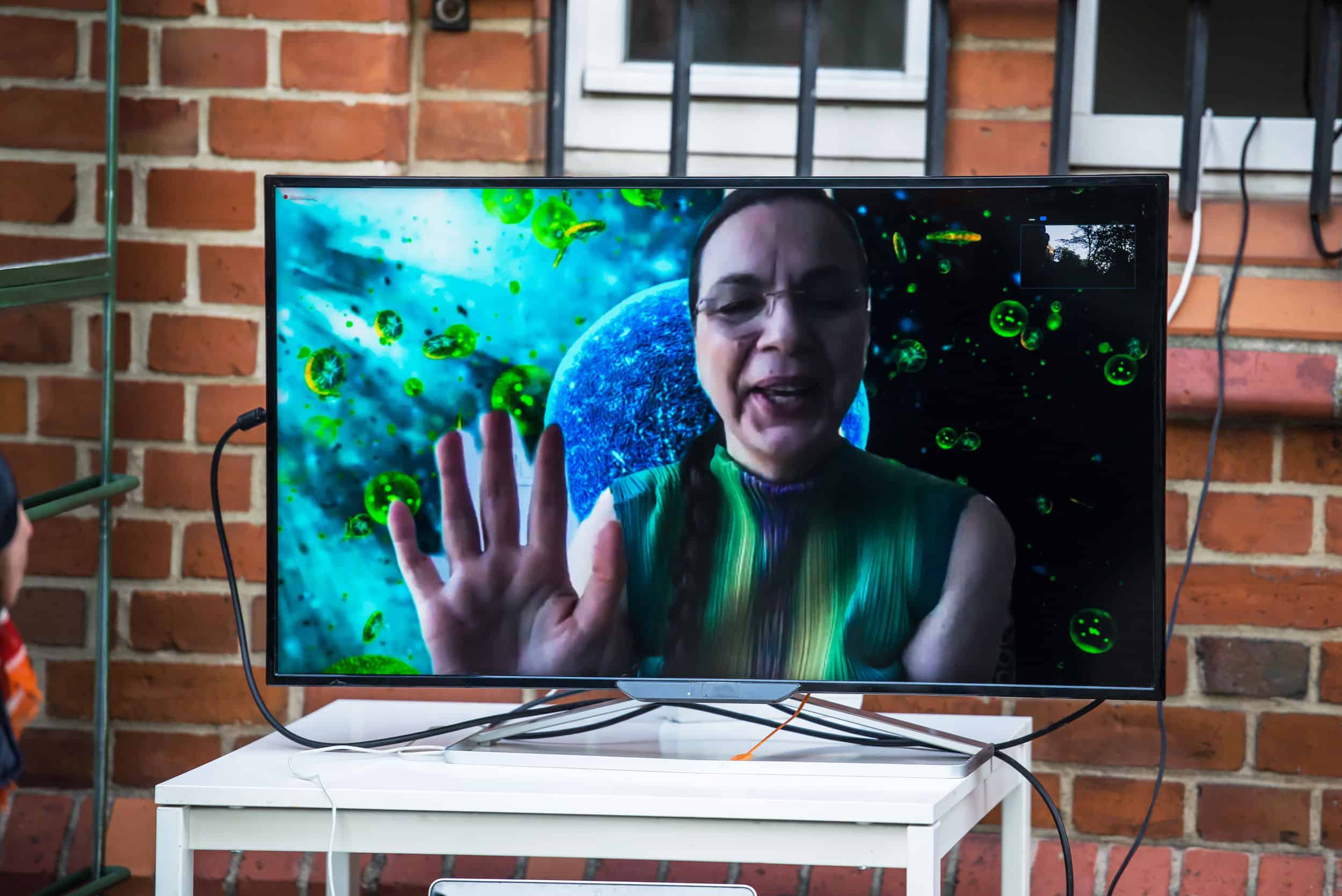
Victoria Vesna, Gdansk’s Lazna Centre for Contemporary Art, photo: Adam Bogdan
Maria Markiewicz: Your latest exhibition the “Noise Aquarium” has just opened in Gdansk. The work that you’re showing there is a project dealing with the problem of pollution of the oceans by anthropogenic noise. Where did the idea for this project come from and how did it all start?
Victoria Vesna: Work on this project started in 2016 when I was first introduced to the amazing plankton visualisations by Alfred Vendl. He invited me to make an artwork with the beautiful animations created by Martina Fröschl who was his PhD student at the time. They produced these visuals in close collaboration with biologists Stephan Handschuh and Thomas Schwaha for the film director Terence Malick, but in the end, all of their hard work was not used in his movie. At first, I was not sure at all how I could contribute to these amazing animations, but the images were so magical that I got really fascinated by the complexity and diversity of the plankton. So, I started researching more about it and it took about two years of learning and meditating on the plankton before I came up with a concept and started working on the installation itself.
MM: In the “Noise Aquarium”, plankton-forming microorganisms are each enlarged to the size of a whale. The installation is interdisciplinary and interactive – when the participants move closer to the animations, the noise amplifies, showing how humans can affect those underappreciated creatures. Where does your interest in sound come from?
VV: Well, my interest in sound and noise goes way back! In relation to the art world, I dropped out of the art school to form a band in the 80s in East Village, NY. I was really bored with art galleries and not into working alone in my studio – going to clubs and watching bands perform live was much more exciting to me. I was particularly taken and participated in the industrial sound art and experimental post-punk movement. After five years of experimenting, performing, cutting records, creating zines and music videos, I went back to art school and looking back I’ve realised that I was self-teaching sound and performance. I also got used to working in a group as the lead singer and performer, so it was just shifting to a media arts format where sound takes an important part of the work. I felt that much of the media work puts sound secondary to the visuals while the sound art field often has no visuals at all, so I started experimenting with using visuals to pull you into sound.
Victoria Vesna, “Noise Aquarium”, Gdansk’s Lazna Centre for Contemporary Art, photo: Adam Bogdan
Victoria Vesna, “Noise Aquarium”, Gdansk’s Lazna Centre for Contemporary Art, photo: Adam Bogdan
MM: And your interest in microplankton?
VV: When I first saw images of microplastics being consumed by the plankton, I was shocked. Vendl asked the biologists to visualize this in their lab and this was added to the project – the entire system of consumerism is what creates all the noise we deal with underwater and in our own lives. We are all interconnected in this incredibly complex system and lost our way in the noise that we all participate in. A few years later I started Water Bodies, an online project that is still going after a decade, in collaboration with Claudia Jacques – we collect works by artists and scientists who are interested in preserving our environment.
MM: When I was reading about your work, I discovered that plankton contributes between 50 to 85 percent of the oxygen in Earth’s atmosphere, but there is still not enough research about it! Was there a sense of urgency when you discovered the importance of this topic?
VV: First of all, I am really pleased that you learned about the importance of plankton through an artwork! Life on earth exists because we are able to breathe in oxygen, most of us can hold our breath for about a minute or 2 at most. In fact, the world’s best breath holder can only do so for about 23 minutes according to world records. We all know that oxygen is central to our existence.
As I was already familiar and concerned about the underwater noise pollution, I started wondering what effect this has on the plankton. I asked the biologists and other scientists I came into contact with if they could connect me to someone who does this research and was surprised that they were not aware of any. Still, I felt that this must be brought to attention because there is clear evidence that it directly impacts larger creatures such as dolphins and whales. In the meantime, I did find the work of scientists who address the issue of plankton and noise pollution and the interest has grown ever since – it is now proven that destructively loud sound frequencies have an effect on life on all levels.
Last year so many dead whales washed ashore, and it certainly raised my sense of urgency which was shared with my collaborators. Lab reports later revealed that the whales died due to haemorrhaging around the brain, and blood around the ears. The haemorrhaging was caused by 16 hours of intense underwater sonar sounds generated from US Navy warships. This is the reason I wanted to blow up planktons to the size of whales – to show the complexity of plankton at the bottom of the food chain. When the audience is quiet and centred, the noise disappears and we hear the call of a whale who, as we do, depends on the plankton.

Victoria Vesna, “Noise Aquarium”, photographs courtesy of the artist
MM: Although you were trained as a painter, your work now resides between many different disciplines and technologies – it bridges the gap between humanities and natural sciences. What is the connection between art and science and why is it so important?
VV: As you know, I have been teaching art and science for a decade now and the way I start a class is by showing that art and science is nothing new – it is due to the industrial age that these got separated and then further narrowed into disciplinary boundaries even within the larger areas. So, we really are dealing with the consequence of this separation that results in artists not getting the proper education in science and technology that is so necessary in the contemporary world and scientists not being aware of the huge impact their work has on culture, ethics, ecology and consciousness. In my opinion, re-connecting art and science is urgent to help save ourselves.
MM: You have worked with so many great scientists in the past. How did those relationships start and how did you agree to work together?
VV: Every collaboration was a different story as most relationships and friendships are. And one thing leads to another. Early on, I was married to a nuclear physicist, Bogdan Maglich, who introduced me to a lot of amazing creative scientists, and this prompted me to do a series of interviews. Together we worked on a documentary movie, Unfolding the Secrets of the Pyramids using Cosmic Rays, and I was amazed at the esoteric content and the creativity of the scientists who I have met. This movie received a Golden Eagle for best documentary and qualified for the Oscar application which opened the door to being invited to develop Life in the Universe CD-ROM with Stephen Hawking, perhaps the most famous scientist I was honoured to work with. But it should be noted that these experiences were more educational as at that point I was an artist in service of making science accessible to the larger public.
My art installations and performances were still completely separate, and I was struggling to find ways to combine the two. I did not feel comfortable to create works about science as this was not my expertise, but I also was not interested in just promoting scientific work. I wanted an equal collaboration where each side would change the other and something new would emerge. I often quote Buckminster Fuller who was the subject of my doctoral thesis – ‘the more advanced art is the closer it is to science; the more advanced science is, the closer it is to art’.

Victoria Vesna, “Noise Aquarium”, Gdansk’s Lazna Centre for Contemporary Art, photo: Adam Bogdan
MM: James Gimzewski is another great scientist with whom you’ve worked with. Can you tell me what made your artist-scientist relationship so worthwhile?
VV: When I met Gimzewski, the separation between art and science completely melted away and I did not separate it in my work anymore. He was genuinely interested in expanding his mind by engaging the art process directly, hands-on, and also felt that it would benefit his science. He was also already famous and accomplished enough in his field, so he didn’t worry about what his peers thought. This is changing slowly now, but at that point, twenty years ago, it was risky for a scientist to engage in art, and many times I would work with a scientist who would tell me not to put their name down.
MM: People are now more conscious about climate change than probably ever before. What is your stance on the measures that are being undertaken to stop it? Are you positive when looking at what is yet to come?
VV: It is a real struggle to stay positive. But to end on a more optimistic and hopeful note regarding noise – the Covid-19 pandemic sparked an extreme economic slowdown in March, sending cruise ships to port and oil tankers to anchor. This is a very special moment as the pandemic has actually made the seas and oceans quieter and the underwater creatures happier, and scientists are able to make a comparison with the pre-industrial age. Many on the land are reporting that they hear birds again which were either drowned out by noise or forgotten to exist. So, we finally have a chance to listen and take a moment to consider and imagine how we would like our future to look like once the virus goes away. This is the time for artists and scientists – those fortunate enough to secure a job – to work together and move away from consumerism to new ways of thinking, honouring not only the scientific and technological advances but also the ancient and indigenous wisdoms.
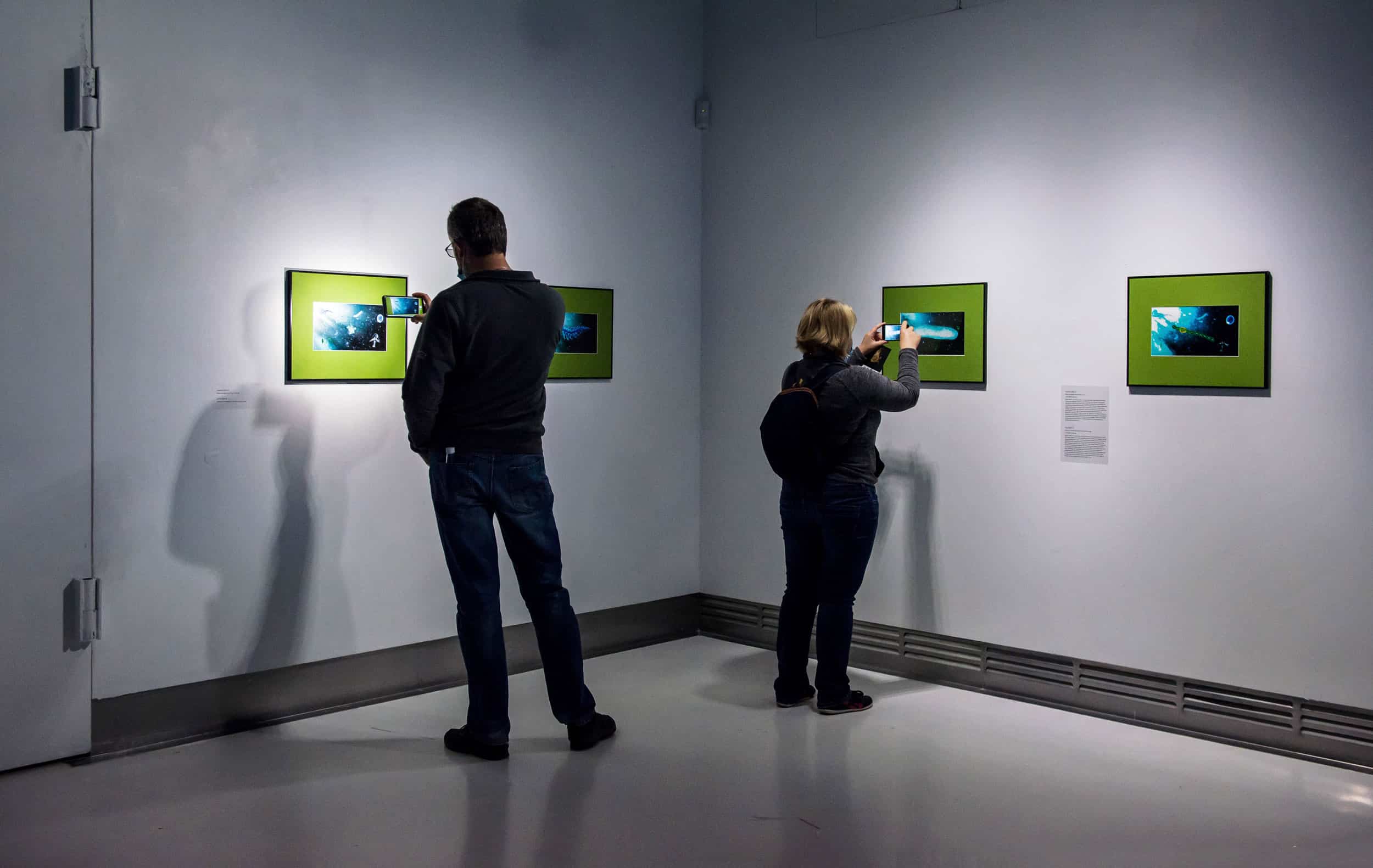
Victoria Vesna, “Noise Aquarium”, Gdansk’s Lazna Centre for Contemporary Art, photo: Adam Bogdan
VICTORIA VESNA – NOISE AQUARIUM
03.09 – 20.09.2020
ŁAŹNIA 1
Jaskółcza 1 Street, Gdańsk – Dolne Miasto
Victoria Vesna, “Noise Aquarium”, Gdansk’s Lazna Centre for Contemporary Art, photo: Adam Bogdan
Victoria Vesna, “Noise Aquarium”, Gdansk’s Lazna Centre for Contemporary Art, photo: Adam Bogdan
Victoria Vesna, “Noise Aquarium”, Gdansk’s Lazna Centre for Contemporary Art, photo: Adam Bogdan



